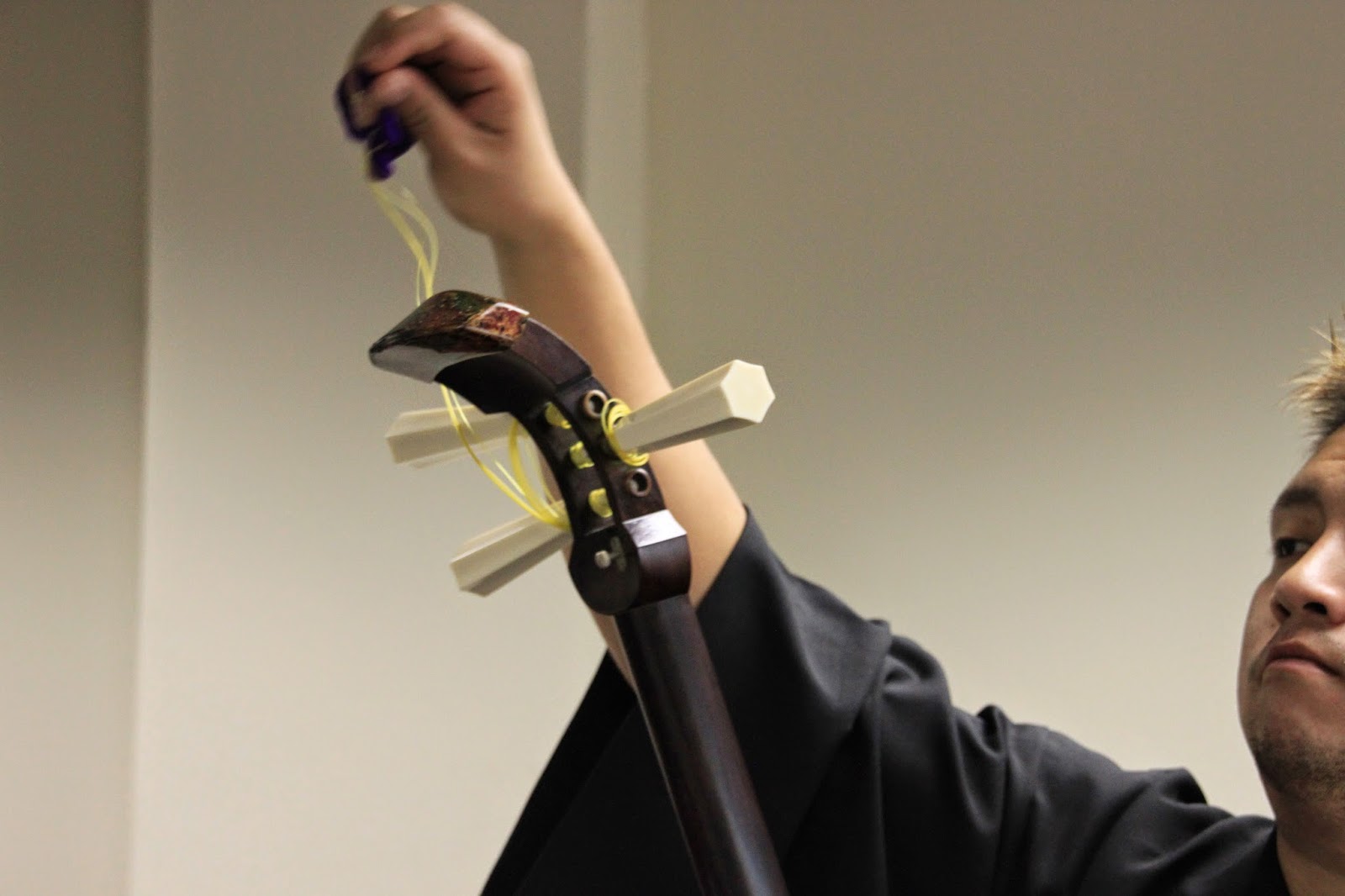Shamisen - Strings Of Tradition
What does one get when one combines ivory, silk threads, red sandalwood, dog skin and tortoise shell? No, it is not a part of any ritual or ingredients out of a horror flick. They are the raw materials for the traditional Japanese plucked lute - shamisen.
"The word 'shamisen' means three strings," explained Hidesaburo Abe, founder of Abeya folk music group.
In the land of the Samurai, the shamisen is an integral part of the country's traditional folk culture.
"There are a variety of shamisen in Japan," said Hiromoto Oyama, first secretary, Embassy of Japan in Jamaica. "The instrument has variants, according to the region and the kind of folklore that it is being played with."
INDIAN ROOTS
Shamisen traces its origins to Okinawa, south Japan, where it is said to have come from India. Musical instruments similar to the shamisen have been excavated in Mongolia.
"The shamisen has a variety of sizes, but the shape is almost similar," Oyama said. "Some variants are larger; this is to create a louder sound that could resonate across a wider audience."
Red sandalwood, which is imported from India, is used to make this string instrument. Sandalwood is sacred in Indian tradition, and the red sandalwood has beauty and therapeutic uses. The base, which is hollow and round, which, again, can be similar to the traditional Indian string instrument, sitar, is covered with dog skin.
'Eeew!' might be the reaction from some, but the canine species are not being slaughtered; this part of their mortal remains is processed, treated, and stretched.
"Traditionally, cat skin was used," said Abe. "And the reason for using their skin is that it is supple and creates the desired notes and the pitch in the music."
Abe, who is the founder of Abeya folk music group, said though deeply traditional, the shamisen his group uses has been modified to make it detachable and portable.
PARTS OF SHAMISEN
The neck of the shamisen is usually divided into three or four pieces that fit and lock together.
Attached to the base is the red sandalwood stem, which crosses the drum-like base of the shamisen, partially protruding at the other side of the body, acting as an anchor for the strings.
The top piece, the headrests, the tuners, their pegs - which are used to wind the strings - are long and hexagonal in shape, and are traditionally carved out of ivory.
"Ivory has become rare, so nowadays, wood and plastic are used," said Abe.
The traditional materials extend to the pick, which is spatula-shaped - the handle made from ivory, and the blade made either from tortoise shell or buffalo horn, the former being the material of choice because of its flexibility.
Abe's son, Ginzaburo, meticulously fixed all the pieces which were wrapped in silk bags, stringed the samisen, and did a test song … as he broke into No Woman No Cry, a convergence of Bob Marley's lyrical prowess with the traditional Japanese folklore.
And, as its widely known and acknowledged, music is the food of love, so play on.






Comments
Post a Comment